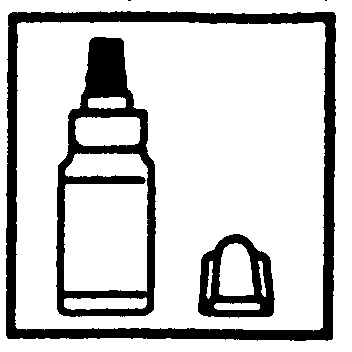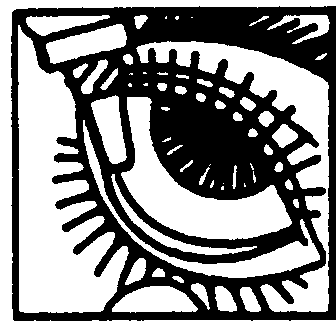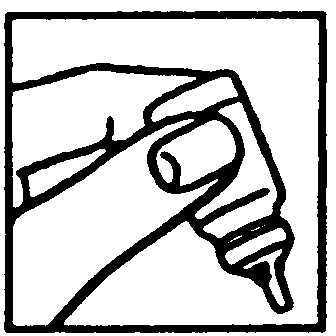Trusopt®
(dorzolamide hydrochloride, MSD)
PLEASE READ THIS LEAFLET CAREFULLY BEFORE YOU START TO TAKE YOUR MEDICINE. EVEN IF YOU HAVE JUST REFILLED YOUR PRESCRIPTION, SOME OF THE INFORMATION IN THE PREVIOUS LEAFLET MAY HAVE CHANGED.
REMEMBER THAT YOUR DOCTOR HAS PRESCRIBED THIS MEDICINE ONLY FOR YOU. NEVER GIVE IT TO ANYONE ELSE.
What is Trusopt?
Trusopt (dorzolamide hydrochloride ophthalmic solution, MSD) is a sterile eye drop. Trusopt contains 2% dorzolamide hydrochloride, a sulphonamide-related compound, as the active ingredient.
In addition, Trusopt contains the following inactive ingredients: hydroxyethylcellulose, mannitol, sodium citrate, sodium hydroxide, and water for injection. Benzalkonium chloride is added as a preservative.
Trusopt is available in vials containing 5 ml of solution.
Trusopt is an ophthalmic carbonic anhydrase inhibitor which lowers pressure in the eye.
Product licence authorisation holder:
Merck Sharp & Dohme Limited, Hoddesdon, Hertfordshire, EN 11 9BU.Product Manufacturer:
Merck Manufacturing Division Laboratoires Merck Sharp & Dohme-Chibret, 200 Boulevard Etienne Clementel, 63018 Clermont-Ferrand, France.Why has my doctor prescribed Trusopt?
Trusopt is prescribed to lower raised pressure in the eye and to treat glaucoma.
Trusopt can be used alone or in addition to other medicines which lower the pressure in the eye (so-called beta-blockers).
Information I should know before or while using Trusopt
Who should not use Trusopt?
Do not use Trusopt if you are allergic to any of the components. Do not use Trusopt if you have severe kidney problems.
What should I tell my doctor (or pharmacist) before or while using Trusopt?
Tell your doctor (or pharmacist) about any medical problems you now have or have had in the past and about any allergies to any medications.
If you develop any eye irritation or any new eye problems such as redness of the eye or swelling of the eyelids, contact your doctor immediately.
If you suspect that Trusopt is causing an allergic reaction (for example, skin rash or itching), stop using Trusopt and contact your doctor as soon as possible.
If you wear soft contact lenses, you should consult your doctor before using Trusopt (the preservative benzalkonium chloride may possibly discolour the lenses).
Use in children
Trusopt is not recommended for use in children.
Use in the elderly
In studies with Trusopt, the effects of Trusopt were similar in both elderly and younger patients.
Use in pregnancy and breast-feeding
Pregnancy
Tell your doctor if you are pregnant or intend to become pregnant. You should not use Trusopt during pregnancy.
Breast-feeding
Tell your doctor if you are breast-feeding or intend to breast-feed. You should not use Trusopt while breastfeeding.
Use in patients with significant liver impairment
Tell your doctor if you now have or have had liver problems in the past.
Can I use Trusopt with other medicines?
Tell your doctor about all drugs (including eye drops)
that you are using or plan to use, including those obtained without a prescription, particularly large doses of aspirin.
Can I drive or operate machinery while using Trusopt?
Trusopt is not likely to affect your ability to drive or operate machinery.What should I know about the inactive ingredients in Trusopt?
If you wear soft contact lenses, you should consult your doctor before using Trusopt (the preservative benzalkonium chloride may possibly discolour the lenses).
How should I take Trusopt?
The appropriate dosage and duration of treatment will be established by your doctor.
When Trusopt is used alone, the dose is one drop in the affected eye(s) in the morning, in the afternoon and in the evening.
If your doctor has recommended you use Trusopt with a beta-blocker eye drop to lower eye pressure then the dose is one drop of Trusopt in the affected eye(s) in the morning and in the evening.
If you are using Trusopt with another eye drop, the drops should be instilled at least 10 minutes apart.
Do not change the dosage of the drug without consulting your doctor. If you must stop treatment, contact your doctor immediately.
Do not allow the tip of the container to touch the eye or areas around the eye.
To avoid possible contamination, keep the tip of the container away from contact with any surface.
Instructions for use:


